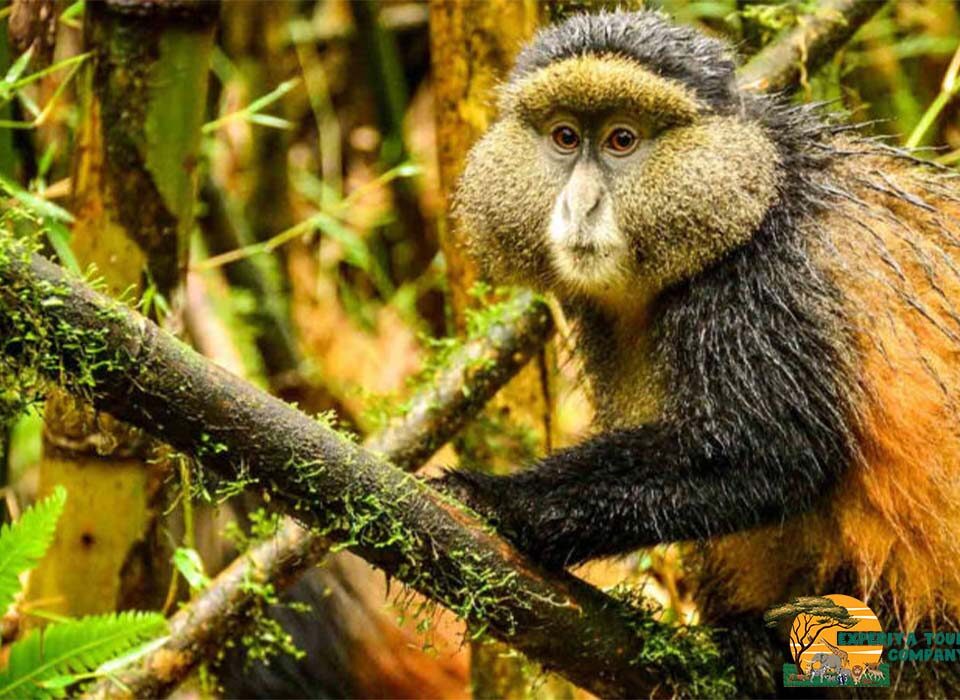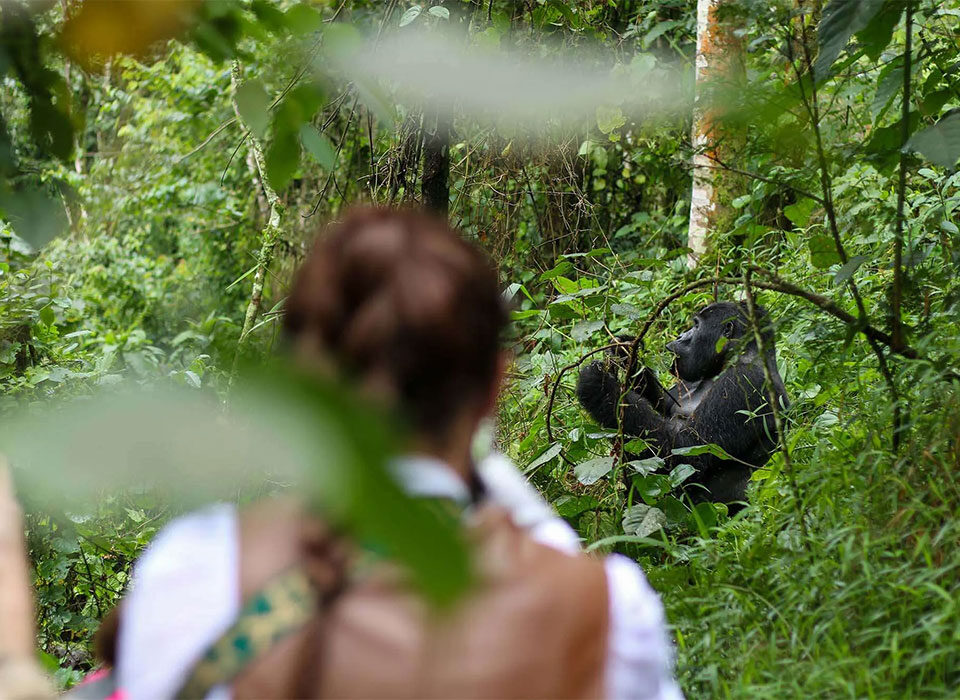
Is Ziwa Rhino Sanctuary Worth Visiting? | Uganda Safari Travel Guide
October 24, 2025
What’s Unique About Kidepo Valley National Park | Uganda Safari Guide
October 24, 2025Can I Spot All the Big Five in Uganda? | Uganda Safari Guide

Can I Spot All the Big Five in Uganda?
Uganda, often called the “Pearl of Africa,” is celebrated for its stunning landscapes, abundant wildlife, and the warmth of its people. From mist-covered mountains to rolling savannahs and tropical forests teeming with life, the country offers some of the most diverse safari experiences on the continent. But one question often arises among travelers planning a safari here: Can I spot all the Big Five in Uganda?
The answer is an enthusiastic yes. Uganda is one of the few countries in Africa where you can see all of the Big Five — lion, leopard, elephant, buffalo, and rhino — in their natural habitats. What makes it even more special is that you can combine this classic Big Five safari with other unique experiences like gorilla trekking, chimpanzee tracking, and birdwatching, creating a truly well-rounded adventure.
In this blog, we’ll explore where to find each of the Big Five in Uganda, the best times to visit, and what makes encountering them here such a distinctive and memorable experience.
The Big Five and Their Significance
The term “Big Five” dates back to the early days of safari hunting, referring to the five most challenging and dangerous animals to hunt on foot in Africa. Today, the Big Five represent a more positive symbol — the ultimate wildlife viewing experience for safari travelers. Seeing all five species in their natural environment is a mark of a complete African safari.
Uganda’s protected parks and conservation areas provide excellent opportunities to observe these iconic animals in the wild. Thanks to the country’s commitment to wildlife protection and eco-tourism, populations of the Big Five are thriving once again, allowing modern travelers to witness them in peace and safety.
The African Lion – The King of the Savannah
Lions are the most iconic members of the Big Five, and Uganda is one of the best places in East Africa to see them in both classic and unique settings. The country’s lions are known for their confidence and charisma — often seen lounging under acacia trees or stalking prey across golden plains.
Where to See Lions in Uganda
1. Queen Elizabeth National Park
This park is famous for its tree-climbing lions found in the Ishasha sector, in the southern part of the park. Unlike most lions elsewhere, these ones have adapted to climb fig trees to escape the heat, avoid insects, and get a better view of potential prey. Watching them draped across branches against the backdrop of the savannah is a truly remarkable sight.
2. Murchison Falls National Park
The largest and oldest national park in Uganda, Murchison Falls is home to a healthy lion population. They are often spotted in the northern sector between the Nile and the Albert Delta, where large herds of Uganda kob and buffalo roam — prime hunting grounds for these powerful predators.
3. Kidepo Valley National Park
For travelers seeking an untouched wilderness, Kidepo offers some of the most spectacular lion sightings in East Africa. The park’s remote location ensures fewer tourists and more authentic encounters, often with dramatic landscapes as a backdrop.
Best Time to See Lions
Lions can be seen year-round, but the dry seasons (December to February and June to September) provide the best viewing conditions. Vegetation is thinner, making it easier to spot predators and their prey.
The African Elephant – Gentle Giants of the Wild
Elephants are the largest land mammals on earth, and Uganda’s parks are home to thousands of them. These gentle giants add a majestic presence to any safari, whether you see them feeding in open plains or bathing along riverbanks.

Where to See Elephants in Uganda
1. Murchison Falls National Park
The park boasts one of the largest elephant populations in Uganda. Herds can often be seen near the Nile River, particularly around Paraa and the Delta area. Boat cruises along the river offer up-close encounters with elephants as they come to drink or cross the water.
2. Queen Elizabeth National Park
This park’s wide range of habitats supports large herds of elephants. They are often seen moving gracefully through the savannah or cooling off in the Kazinga Channel.
3. Kibale and Kidepo National Parks
While Kibale is primarily known for chimpanzees, it’s also home to forest elephants — smaller and shyer than their savannah relatives. In Kidepo, elephants roam freely across the open plains, offering breathtaking photographic opportunities.
Best Time to See Elephants
Elephants are visible throughout the year, though the dry season offers the best chance to see large herds congregating around water sources.
The African Leopard – The Master of Stealth
Elusive, solitary, and mysterious, leopards are the most difficult of the Big Five to spot. They are nocturnal and often hide during the day, resting in thick vegetation or high up in tree branches. Spotting one is a moment of pure excitement and privilege.
Where to See Leopards in Uganda
1. Murchison Falls National Park
Leopards thrive in the park’s dense woodlands and along the riverine areas. Early morning or late afternoon game drives offer the best chance to spot them slinking through the shadows or resting in trees.
2. Queen Elizabeth National Park
The Mweya Peninsula and Kasenyi Plains are hotspots for leopard sightings. Experienced guides know where these elusive cats frequent, and patient travelers are often rewarded with unforgettable views.
3. Lake Mburo National Park
Though smaller in size, Lake Mburo is one of Uganda’s best leopard habitats. The park’s mix of rocky outcrops and acacia woodlands creates perfect hiding spots for these elegant predators.
Best Time to See Leopards
Leopards are most active at dawn and dusk. Dry seasons improve visibility, but skilled guides can find them any time of year.
The African Buffalo – The Relentless Grazers
Buffaloes are among the most numerous and easily seen of the Big Five. Their immense herds dominate Uganda’s savannah landscapes, adding a sense of grandeur and movement to the wild.
Where to See Buffaloes in Uganda
1. Queen Elizabeth National Park
Large herds of African buffalo can be found grazing across the park’s grasslands or cooling off in the Kazinga Channel. Boat safaris here offer the chance to watch them interact with hippos and elephants along the shores.
2. Murchison Falls National Park
The northern sector is home to thousands of buffaloes. Their large, dark forms contrast beautifully with the golden plains during sunset — a classic safari scene.
3. Kidepo Valley National Park
Kidepo’s vast landscapes host massive herds of buffalo, often seen moving together across the Narus Valley. The combination of open plains and dramatic mountain backdrops makes for extraordinary photography.
Best Time to See Buffaloes
Buffaloes can be observed throughout the year. During the dry months, they gather in even larger numbers around remaining waterholes, making sightings spectacular.
The Rhinoceros – Uganda’s Conservation Triumph
The rhino’s story in Uganda is one of hope and renewal. Once extinct in the wild due to poaching, rhinos have been successfully reintroduced through the establishment of the Ziwa Rhino Sanctuary. Today, this sanctuary provides a safe and thriving environment for these magnificent animals.
Where to See Rhinos in Uganda
Ziwa Rhino Sanctuary (Nakasongola District)
Located about 176 kilometers north of Kampala, Ziwa is the only place in Uganda where visitors can see rhinos in the wild. Here, guided rhino tracking on foot offers a thrilling and safe opportunity to observe these gentle giants up close. The sanctuary is also a key conservation hub, preparing to reintroduce rhinos into Uganda’s national parks in the future.
Beyond rhinos, Ziwa hosts a variety of other wildlife and over 300 bird species, making it a rewarding stopover en route to Murchison Falls National Park.
Best Time to See Rhinos
Rhinos can be tracked year-round. The dry seasons provide the easiest walking conditions, but the lush green months also create picturesque settings for photography.
Can You Really See All the Big Five in Uganda?
Yes — and remarkably, you can do so within a single safari circuit. Many travelers begin their journey in Kampala or Entebbe, stop at Ziwa Rhino Sanctuary to see rhinos, continue to Murchison Falls National Park for lions, elephants, leopards, and buffaloes, and optionally visit Queen Elizabeth National Park or Kidepo Valley for more Big Five encounters.
Uganda’s Big Five safari is unique not only for its diversity but also for its intimacy. Unlike in some busier African parks, Uganda’s wildlife encounters are less crowded and feel deeply personal. The country’s landscapes add further magic — from the roaring Murchison Falls to the scenic Albertine Rift and the rolling savannahs of Kidepo.
And the best part? Uganda’s safaris can be easily combined with other extraordinary experiences — mountain gorilla trekking in Bwindi, chimpanzee tracking in Kibale, boat cruises on the Nile, and birdwatching adventures — making it one of Africa’s most complete wildlife destinations.
Best Time to Spot All the Big Five
Uganda’s national parks are open year-round, but the dry seasons (June–September and December–February) are ideal for Big Five safaris. During these months, animals gather around water sources, vegetation is thinner, and roads are easier to navigate.
The wet seasons (March–May and October–November), on the other hand, bring lush green landscapes and fewer tourists, offering excellent photographic opportunities and serene park experiences.
Recommended Safari Operator: Experiya Tour Company
If you’re dreaming of spotting all the Big Five in Uganda, traveling with a trusted local safari expert makes all the difference. Experiya Tour Company is highly recommended for travelers seeking professional, seamless, and unforgettable safari experiences. Their knowledgeable guides know exactly where and when to find each of the Big Five, ensuring you maximize every game drive and park visit.
From tracking rhinos at Ziwa to watching lions in Murchison Falls and leopards in Queen Elizabeth, Experiya designs personalized itineraries that capture the very best of Uganda’s wildlife. Whether you’re a first-time visitor or a seasoned explorer, Experiya Tour Company will turn your dream of a Big Five safari into a reality — with comfort, expertise, and authentic Ugandan hospitality.



